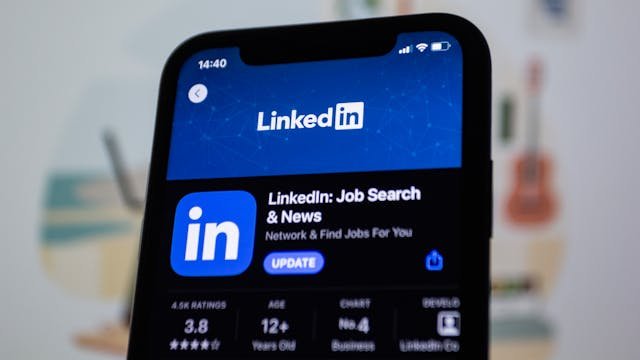Paid social media advertising is a game-changer for businesses of all sizes. It allows you to reach specific audiences, scale campaigns quickly, and see measurable results. But here’s the catch: it’s easy to overspend while chasing results. If you don’t carefully balance quality and cost, you risk blowing your budget without achieving the conversions or engagement you need.
The good news? You don’t have to choose between high-quality ads and affordable campaigns. With the right strategies, you can craft effective ads that keep costs in check while driving valuable outcomes. Let’s dive into how you can balance quality and cost in paid social media advertising and make every dollar count.
Step 1: Start with a Clear Goal
Define What Success Looks Like
Before launching any paid social media campaign, you need to have a clear goal. Are you looking to drive traffic to your website, generate leads, boost sales, or increase brand awareness? Your objective will determine everything—from your ad creatives to your targeting strategy.
For example, if you’re running an e-commerce store, a goal like “Increase sales by 20% in the next quarter” gives you a clear metric to aim for. On the other hand, a goal like “Build brand awareness” might focus more on impressions and reach.
When you have a clear goal, it’s easier to measure success and optimize your campaign for cost-efficiency.
Match the Goal to the Platform
Different social media platforms excel at different objectives. Facebook and Instagram are great for visual storytelling and direct sales, while LinkedIn works better for B2B lead generation. TikTok can help you capture younger audiences with engaging, short-form content.
For example, if you’re a software company targeting professionals, LinkedIn ads may yield better results than Instagram. By aligning your goal with the strengths of the platform, you minimize wasted spend on channels that aren’t a natural fit.
Step 2: Know Your Audience Inside Out

Use Audience Insights to Guide Targeting
The more you know about your audience, the better your targeting will be. Use tools like Facebook Audience Insights or LinkedIn Analytics to understand your audience’s demographics, interests, and online behavior.
For example, if you’re targeting busy parents, you might find that they’re most active on social media in the evening. This insight can help you schedule your ads during peak times to maximize engagement without increasing costs.
Narrow targeting ensures your ads reach the right people, reducing wasted impressions and clicks.
Avoid Overly Narrow Targeting
While it’s tempting to create highly specific audience segments, overly narrow targeting can drive up costs. Platforms often charge more to serve ads to small, specialized audiences because of increased competition.
Instead, strike a balance. Start with a broader audience and refine it based on performance. For instance, if your initial targeting includes people aged 25–40 interested in fitness, analyze the results. If you find that women aged 30–35 convert the most, adjust your targeting accordingly.
Step 3: Craft Compelling Creatives Without Overspending
Prioritize High-Impact Visuals
Social media is a visual-first medium. Eye-catching images or videos are crucial for grabbing attention, but that doesn’t mean you need a huge production budget. Use free or low-cost tools like Canva for creating professional-looking visuals or leverage user-generated content (UGC).
For instance, a beauty brand might use customer testimonials or UGC featuring their products to create authentic, relatable ads. These types of ads often outperform highly polished ones because they feel more genuine.
Invest in high-quality visuals that align with your brand, but don’t overcomplicate the process. Simple, clear, and visually appealing designs are often the most effective.
Test Different Creatives
To balance cost and quality, test multiple ad creatives to see what resonates with your audience. Platforms like Facebook and Instagram allow you to run A/B tests, comparing different images, videos, or headlines.
For example, if you’re promoting a summer sale, test one ad with a bright, sunny image and another with a product-focused close-up. Analyze which ad drives more clicks or conversions, then allocate your budget to the winner.
Testing ensures you’re spending money on ads that deliver results, rather than guessing what might work.
Step 4: Optimize Your Budget Allocation
Start Small and Scale Up
When you’re launching a new campaign, don’t pour your entire budget into untested ads. Start with a small daily budget and monitor performance. Once you identify high-performing ads, scale them up gradually.
For example, if a Facebook ad generates a strong ROI with a $20 daily budget, increase it to $40 and track whether the results scale proportionally. Scaling up successful campaigns minimizes risk and ensures your spending aligns with what’s working.
Use Automated Bidding Strategies
Most social media platforms offer automated bidding options, such as Facebook’s Campaign Budget Optimization or Google’s Smart Bidding. These tools use algorithms to adjust your bids in real-time, helping you get the most value for your budget.
For instance, automated bidding might lower your cost-per-click during off-peak hours or increase it when competition is high. This dynamic approach ensures you’re not overspending while still reaching your audience effectively.
Step 5: Focus on Retargeting for Better ROI

Bring Back Warm Leads
Retargeting is one of the most cost-efficient strategies in paid social media advertising. It focuses on users who have already interacted with your brand—whether they visited your website, added items to their cart, or engaged with your posts.
For example, an e-commerce store could retarget users who abandoned their carts with an ad offering a 10% discount. These users are already familiar with your brand, making them more likely to convert at a lower cost.
Use Dynamic Retargeting
Dynamic retargeting takes personalization to the next level by showing users ads for specific products they viewed. For instance, if someone browsed sneakers on your site, a dynamic ad can feature those exact sneakers along with related items.
These tailored ads often have higher click-through rates and conversions because they’re directly relevant to the user’s interests. This precision reduces wasted spend and increases the quality of your leads.
Step 6: Continuously Monitor and Adjust
Analyze Key Metrics
To balance quality and cost, you need to track the right metrics. Monitor your cost-per-click (CPC), cost-per-conversion (CPC), click-through rate (CTR), and return on ad spend (ROAS). These metrics reveal whether your ads are delivering value.
For instance, if your CTR is low, it might indicate that your creative or messaging isn’t resonating. On the other hand, a high CPC could mean you’re targeting a highly competitive audience.
By analyzing these metrics regularly, you can identify areas for improvement and optimize your campaigns in real time.
Refresh Your Ads Regularly
Ad fatigue can drive up costs and reduce performance. If the same audience sees your ad repeatedly, they’re less likely to engage, leading to higher CPCs and lower ROI. Refresh your ads every few weeks with new visuals, messaging, or offers.
For example, a clothing retailer could rotate between ads featuring summer dresses, accessories, and shoes. This variety keeps the campaign fresh and ensures it continues to attract attention.

Related: Check out our free tools:

Step 7: Leverage Organic and Paid Synergy
Use Organic Content to Test Ideas
Before committing to a paid campaign, test your content organically. Post different types of content—videos, carousels, or infographics—and track engagement. The posts that perform well can be turned into paid ads, saving you money on untested creatives.
For example, a tech company might post a product demo video on Instagram. If the video receives high engagement, they can use it in a paid campaign targeting a broader audience.
Organic testing gives you valuable insights without additional costs, ensuring your paid campaigns have a higher chance of success.
Amplify High-Performing Organic Posts
If you already have organic posts that are resonating with your audience, consider boosting them with a small ad budget. Boosted posts are a low-cost way to expand your reach while leveraging content that’s proven to work.
For instance, if a food blog’s recipe post gains traction organically, a $10 boost can introduce it to new audiences and drive additional engagement or traffic to their site.
Step 8: Use Advanced Targeting Options Strategically
Leverage Lookalike Audiences
One of the most powerful tools in paid social media advertising is the ability to create lookalike audiences. These audiences are modeled after your best customers, making them more likely to engage with your ads. Platforms like Facebook and LinkedIn allow you to upload a list of current customers, and their algorithms will find users with similar traits.
For example, if you run a subscription box business, upload a list of your top subscribers. Facebook can then create a lookalike audience based on their demographics, interests, and behaviors. This precision reduces waste and ensures your budget is spent reaching high-potential leads.
Lookalike audiences are especially effective for scaling campaigns without sacrificing quality, as they target users who are more likely to convert.
Layer Interests and Behaviors
To further refine your targeting and keep costs low, combine demographic targeting with interest and behavior layers. This narrows your audience while ensuring relevance. For instance, instead of targeting all small business owners, you could target small business owners who are also interested in email marketing software or attend industry events.
Layering allows you to reach a smaller, more engaged audience, which often results in a lower cost-per-click and higher ROI. The key is to strike a balance between precision and audience size to avoid excessive competition.
Retarget Across Platforms
Your audience doesn’t stay on one platform, so neither should your retargeting efforts. If someone visits your website through a Facebook ad, consider retargeting them on Instagram or LinkedIn. Cross-platform retargeting keeps your brand top-of-mind and increases the likelihood of conversion.
For example, an online course creator might use Facebook ads to drive traffic to their site and then retarget those visitors with LinkedIn ads highlighting testimonials from industry professionals.
Step 9: Focus on Ad Copy That Converts

Write Clear and Compelling Headlines
Your ad headline is the first thing users see, so it needs to grab their attention instantly. Use clear, benefit-driven language that speaks directly to your audience’s needs or pain points. Avoid vague or overly clever phrasing that might confuse or alienate them.
For example, instead of writing, “The Future of Project Management,” try “Save 10 Hours a Week with Our Project Management Tool.” The latter clearly communicates the value and creates a sense of urgency.
Simple, direct language paired with actionable benefits can significantly improve your click-through rates, lowering your cost-per-click.
Use Social Proof in Your Copy
People trust recommendations from others, which is why incorporating social proof into your ad copy can be so effective. Highlight customer testimonials, reviews, or statistics that demonstrate your product’s success.
For instance, an ad for a fitness app might include copy like, “Join 500,000 people who’ve transformed their health with our app.” This builds credibility and encourages users to explore further.
Social proof also reassures potential customers that they’re making a good decision, increasing conversions and improving your overall ROI.
Create Strong Calls-to-Action (CTAs)
A great ad isn’t complete without a clear and compelling call-to-action. Your CTA should tell users exactly what to do next, whether it’s “Sign Up Today,” “Shop Now,” or “Get Your Free Trial.”
For example, if you’re running a promotion for a meal delivery service, a CTA like “Get 50% Off Your First Box” makes the offer explicit and enticing. Avoid generic CTAs like “Learn More,” which don’t convey urgency or value.
Pairing a strong CTA with relevant visuals and copy can significantly improve your ad’s effectiveness.
Step 10: Test, Analyze, and Refine Campaigns
Conduct Ongoing A/B Testing
The key to optimizing paid social media ads is constant experimentation. A/B testing involves running two versions of an ad with one key difference—such as the image, headline, or CTA—and comparing their performance.
For example, you could test two versions of an Instagram ad: one featuring a lifestyle image of someone using your product and another with a product-focused image. Monitor metrics like click-through rates and conversions to determine which resonates more with your audience.
Regular testing ensures you’re continually improving your ads and allocating your budget to the most effective elements.
Dive Deep into Performance Metrics
Don’t just look at surface-level metrics like impressions or clicks. Dive deeper into metrics that reveal the true value of your campaigns, such as:
- Cost-per-Acquisition (CPA): How much it costs to acquire a new customer.
- Conversion Rate: The percentage of users who take the desired action.
- Return on Ad Spend (ROAS): Revenue generated for every dollar spent on ads.
For instance, if an ad has a high click-through rate but a low conversion rate, it may indicate a disconnect between the ad and the landing page. Addressing this can improve performance and reduce wasted spend.
Adjust in Real Time
Social media advertising platforms provide real-time data, allowing you to adjust campaigns on the fly. If a particular ad isn’t performing, pause it, tweak the creative or targeting, and relaunch. Similarly, if an ad is exceeding expectations, consider increasing the budget to capitalize on its success.
For example, if a holiday-themed ad for your e-commerce store is driving sales at a low cost, boost its budget to maximize reach before the season ends.
Step 11: Align Paid Ads with Organic Strategies

Use Paid Ads to Amplify Organic Content
If you have organic content that’s performing well, paid ads can amplify its reach to a broader audience. This strategy allows you to leverage proven content while keeping costs low.
For example, if a blog post or video receives high engagement on your social channels, promote it with a small ad budget to drive even more traffic. This approach ensures you’re investing in content that already resonates with your audience.
Encourage Engagement to Boost Relevance Scores
Platforms like Facebook and Instagram assign relevance scores to your ads based on how engaging and relevant they are to your audience. Higher relevance scores often lead to lower ad costs and better performance.
Encourage engagement by crafting interactive ads, such as polls, quizzes, or comment-driven campaigns. For instance, a clothing retailer might run an Instagram poll asking, “Which outfit is your favorite?” and use the responses to inform future campaigns.
By aligning your paid ads with organic content and fostering engagement, you create a cohesive strategy that balances quality and cost.
Conclusion: Striking the Perfect Balance
Balancing quality and cost in paid social media advertising isn’t about cutting corners or throwing money at the problem—it’s about being strategic. By setting clear goals, understanding your audience, crafting compelling creatives, and optimizing your budget, you can create campaigns that deliver results without breaking the bank.
Paid social media advertising is a dynamic landscape, but with continuous testing, monitoring, and refinement, you can find the sweet spot where cost-efficiency meets high performance. Start small, focus on what works, and scale intelligently. Every dollar you save while maintaining quality brings you closer to long-term success.
Now it’s your turn. Implement these strategies, keep learning, and watch your paid social campaigns transform into powerful growth engines for your brand.
READ NEXT:
- Are Vanity Metrics Killing Your Marketing Efficiency? Here’s What to Track Instead
- Pinpointing Digital Marketing ROI: Why Your Metrics Aren’t Telling the Full Story
- Unlocking Real ROI in Digital Marketing: The Hidden Costs Draining Your Budget
- How Misaligned Marketing Funnels Are Blocking Your ROI Potential
- Best Digital Marketing Agency In Santa Ana, California
- Best Digital Marketing Agency In San Francisco, California





















